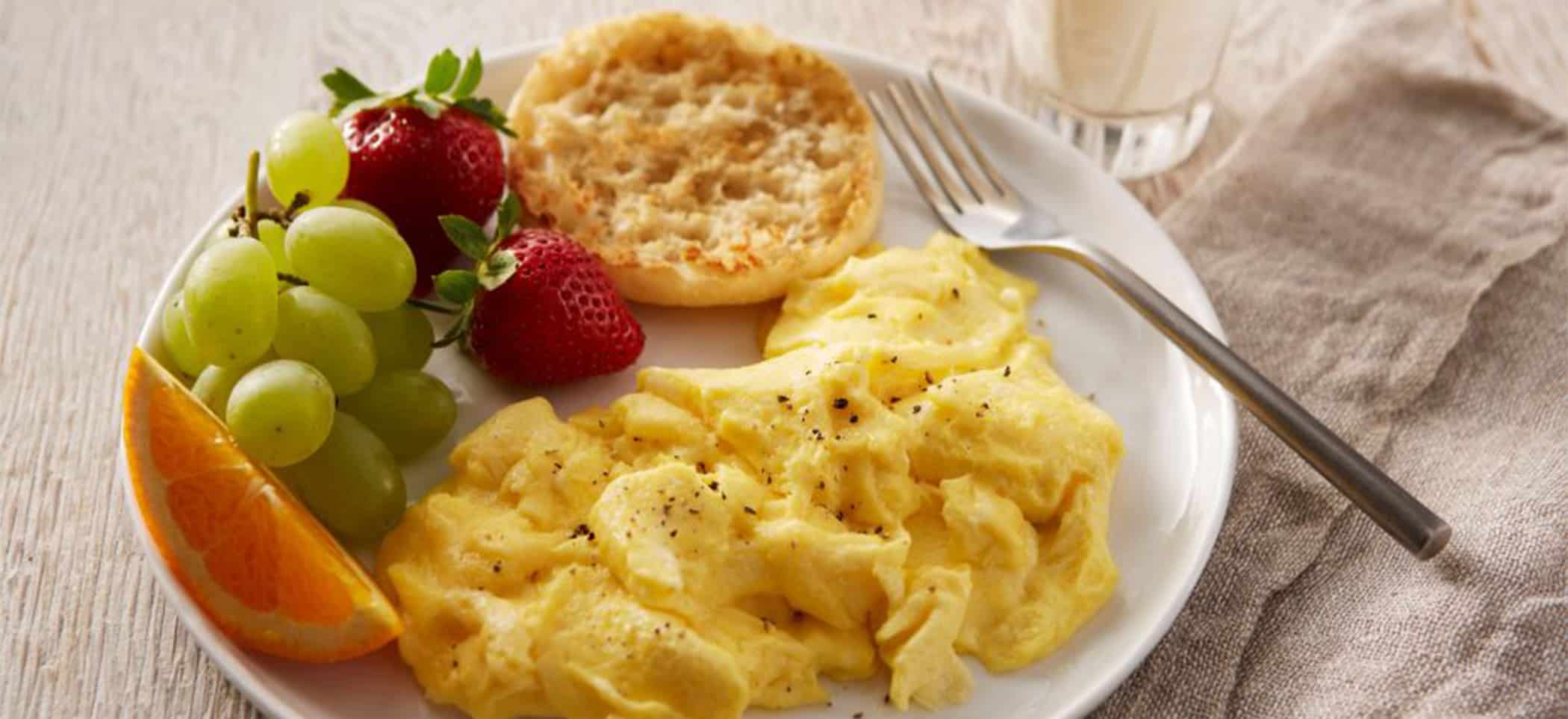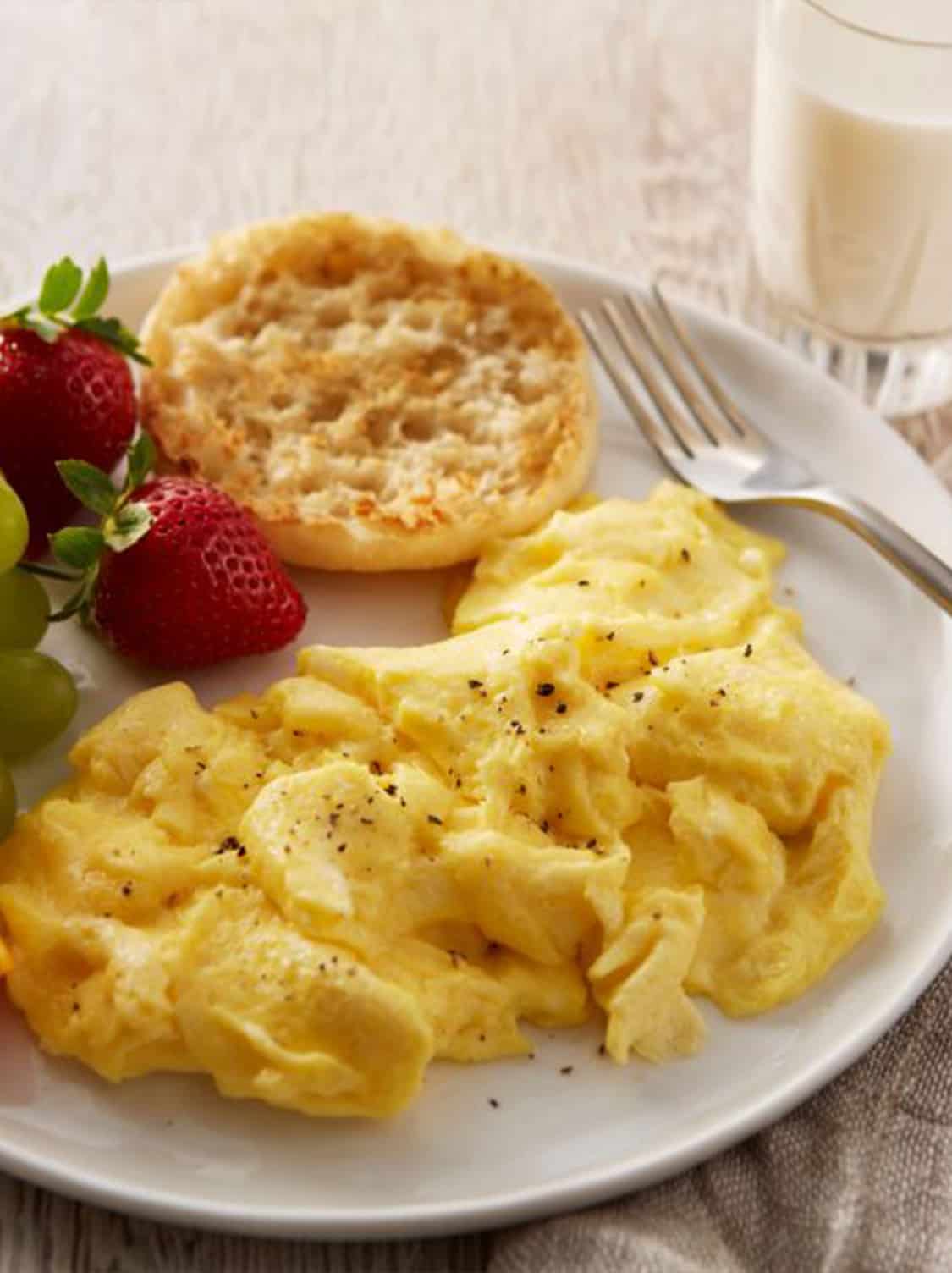

Directions
BEAT eggs, milk, salt and pepper in medium bowl until blended.
HEAT butter in large nonstick skillet over medium heat until hot. POUR in egg mixture. As eggs begin to set, gently PULL the eggs across the pan with a spatula, forming large soft curds.
CONTINUE cooking—pulling, lifting and folding eggs—until thickened and no visible liquid egg remains. Do not stir constantly. REMOVE from heat. SERVE immediately.
Ingredients
- 4 large EGGS
- 1/4 cup milk
- pinch salt
- pinch pepper
- 2 tsp. butter
Tips
Spice up this easy egg favorite by adding Pepper Jack and salsa, or lighten it up by substituting cooking spray and water for the butter and milk.
Avoid cast iron. Eggs scrambled in a cast iron skillet can turn a greenish shade. This harmless but unappealing color change is the result of a chemical reaction between iron in the pan and sulfur in egg whites.
Don’t overcook. The heat retained in the pan will continue to cook and firm up the eggs after pan is removed from heat.
How long to beat? It’s a matter of preference. Light beating produces more dense scrambled eggs. Vigorous beating aerates the eggs, resulting in lighter fluffier curds.
Ideally, serve scrambled eggs as soon as they are cooked, but if necessary, they can be held for a short time. Place the skillet of cooked eggs over a pan of hot water rather than over direct heat.
This recipe is an excellent source of protein, vitamin A and choline, and a good source of vitamin D and folate.
Per serving: 1/2 of recipe
- Calories 196
- Total fat 14 g
- Saturated fat 6 g
- Polyunsaturated fat 2 g
- Monounsaturated fat 5 g
- Cholesterol 385 mg
- Sodium 186 mg
- Carbohydrates 2 g
- Fiber 0 g
- Sugar 2 g
- Protein 14 g
- Vitamin A 207 mcg
- Vitamin D 2 mcg
- Folate 49 mcg
- Choline 299 mg
- Calcium 92 mg
- Iron 2 mg
- Potassium 179 mg
To ensure food safety, eggs should be cooked until both the yolk and the white are firm. Consuming raw or undercooked eggs may increase your risk of foodborne illness, especially for those with certain medical conditions. For recipes that call for eggs that are raw or undercooked when the dish is served, use either pasteurized shell eggs that have been treated to destroy Salmonella, or use pasteurized egg products.
